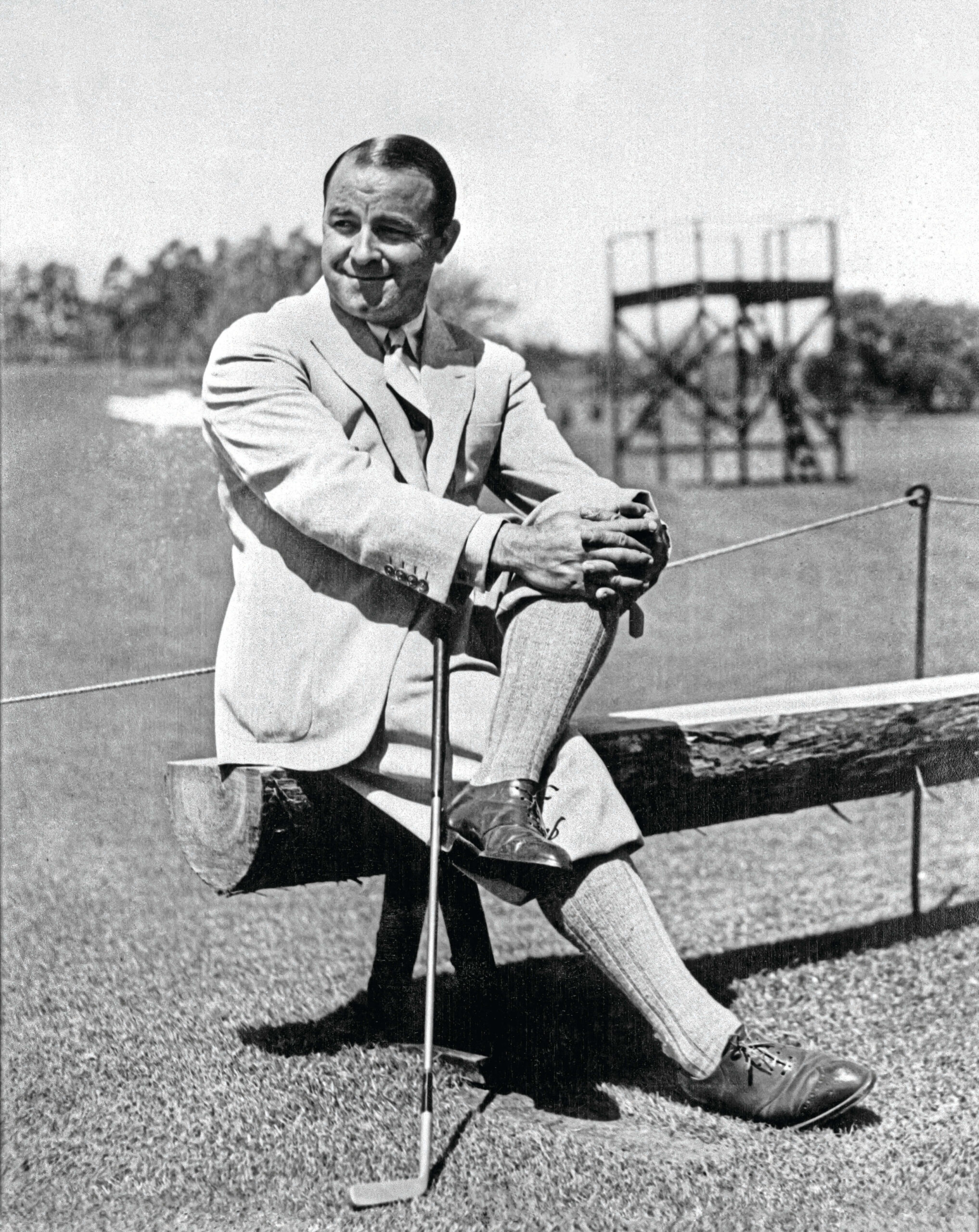
Nestled between the lauded wine regions of Rioja and Bordeaux lies the ancient Kingdom of Navarra. The capital, Pamplona, found international fame in the 1920s when Ernest Hemingway travelled here to indulge his love of fishing, bullfighting and wine. Kingdom pays a visit and finds the bulls still running and the wine still flowing
“Mas de vino.” I wasn’t sure if this was a command, a question or the title of a Catholic ceremony for wine. During Pamplona’s legendary festival of San Fermin all three interpretations are possible—and perhaps complementary. But whatever you think has been said, when your host is legendary winemaker Manuel Louzada and there’s an empty glass in your hand, the correct response is always “Sí.”
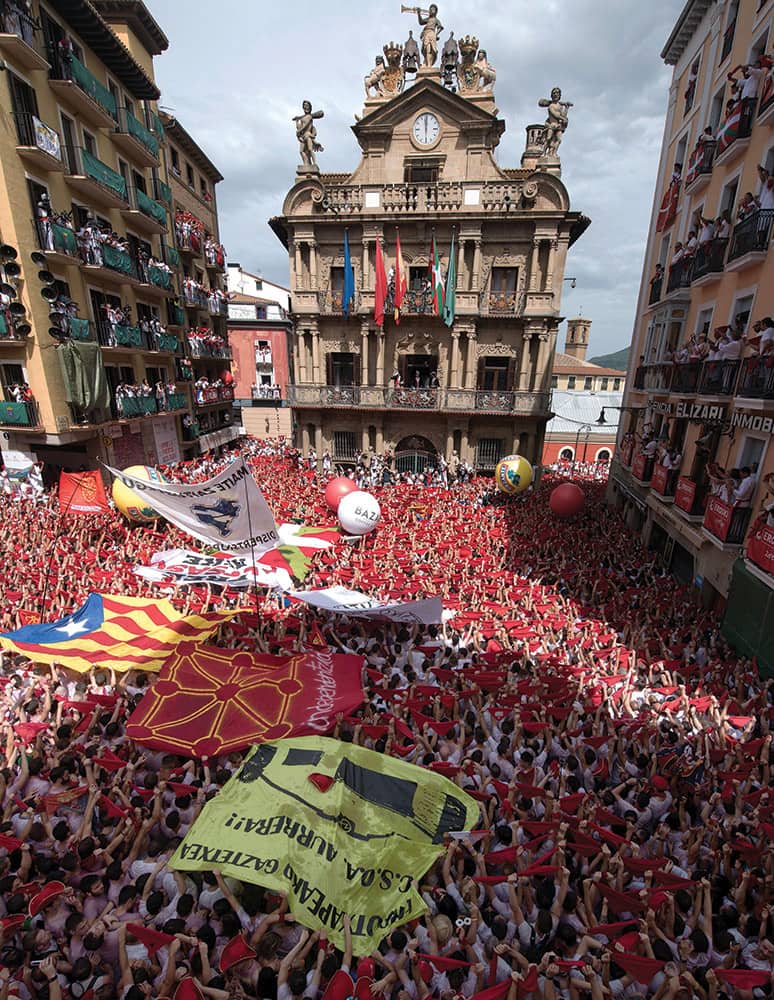
I was staying at the stunning Arinzano winery in Pamplona and it was from there, freshly showered and clean-clothed, that I emerged for the festival. Walking into town as a group, we passed the previous night’s revelers stumbling in the opposite direction, their whites blotched red with wine stains, their words happily slurring and their fiesta souls sated. We had risen before dawn to drive to the edge of the city, and after strolling through sunrise into the old town center we squeezed onto a balcony overlooking the Calle de la Estafeta. Later today the street would hold a melee as six vexatious bulls and thousands of adrenalin-fueled humans scurried and screamed up its narrow path on their way to the town’s famous bullring. For now, the quiet hung in the air just as it has for centuries on such mornings, waiting to be broken.
Dating back to the Middle Ages, San Fermin is the party that never stops. At noon sharp on the sixth of July the fuse is lit on a wild pyrotechnic in the opening ceremony known as “El Chupinazo.” Following the rocket that signals the festival’s start, there’s a wine-drenched celebration in the main square and then nine days of rituals and parties. Each day begins with the 8a.m. release of six bulls, which have been moved into a pen at the edge of the old city walls late the night before. Thousands of thrill-seekers run for short bursts alongside the bulls as a rite of passage (the infamous “running of the bulls”) and thousands more watch from along the route.
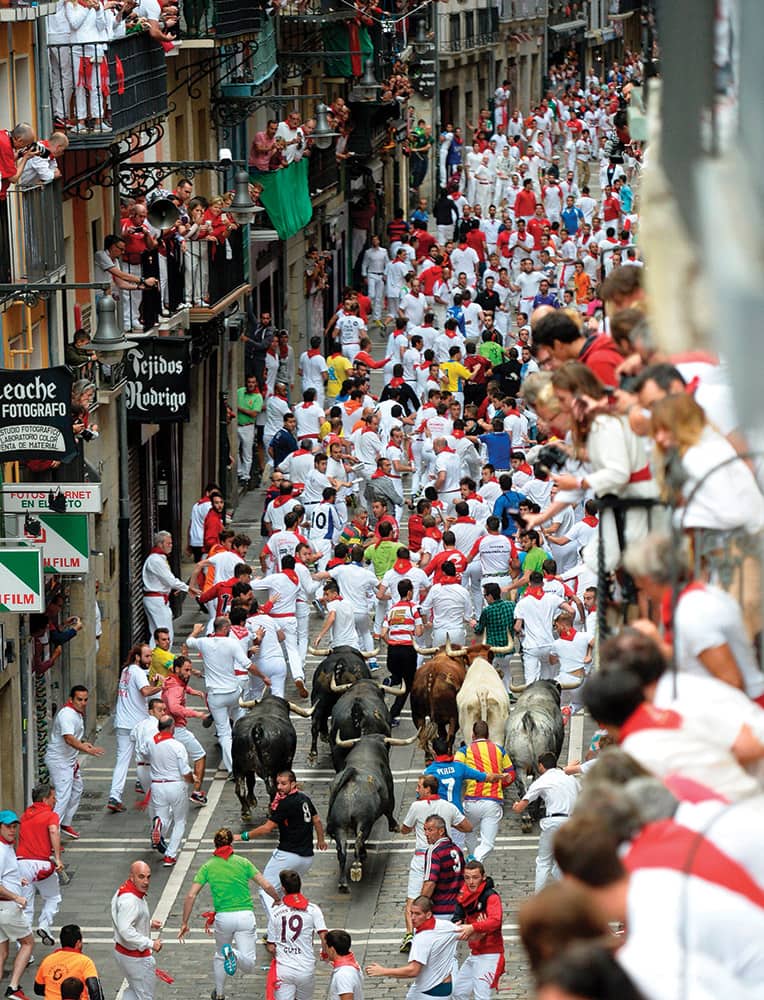
The run is but a half-a-mile long, and it’s over almost as soon as it starts. From the safety of a balcony over the street the action below looks like a maelstrom of meat, horns and humans, and within the blur of movement accidents happen. Death is rare—only 15 have died since Hemingway’s visit in the 1920s—but injuries are a daily occurrence, so frequent in fact that the local TV station keeps a reporter at the hospital to cover the day’s casualties. With between 200 and 300 injuries each year there is much to discuss, although most issues come from falls rather than from an actual goring. Still, during this year’s festival an American runner was gored through the scrotum; an early point to the bulls, then.
Following the run into the ring, some begin to party straight off (following a traditional calorific breakfast of chocolate y churros). We sauntered around town variously joining and leaving impromptu bar parties before stopping for a long and leisurely lunch that was as much about tasting wonderful Arinzano wines as it was about sampling the Michelin-starred food. Replete and refreshed, it was time to make the short walk to the bullring for the late afternoon bullfight.
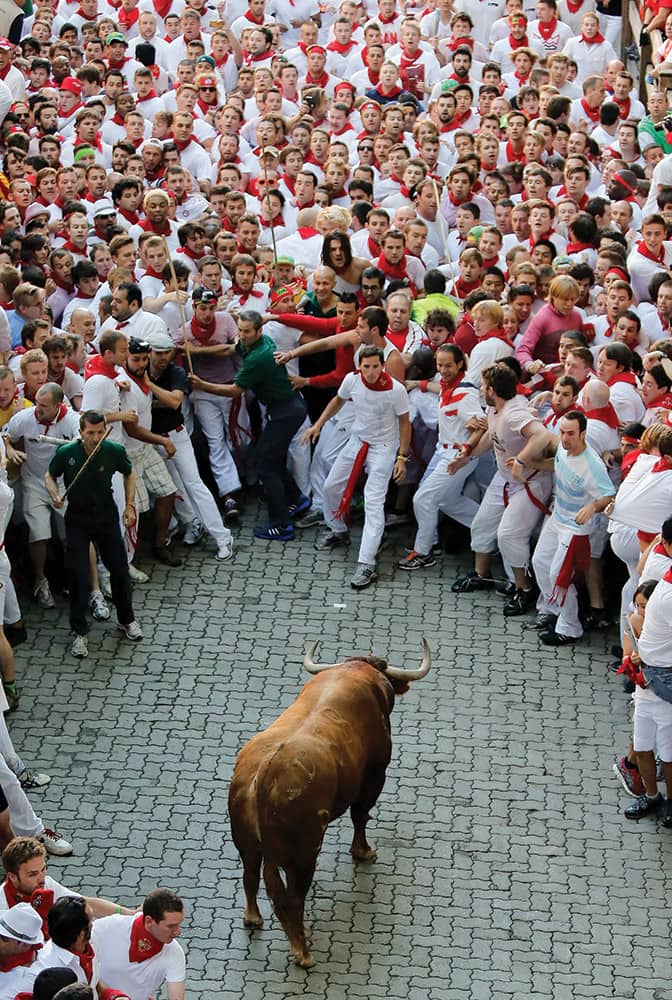
Opinion is divided on bullfighting, and even in Spain it is much protested—and banned outright in the region of Catalunya. It is certainly easy to see the activity as nothing but one-sided entertainment that celebrates a cruel, taunting and drawn-out death, and I won’t argue against that perspective. But being in Spain did compel me to consider how animals are treated at home and elsewhere, hunters using laser scopes on sophisticated weapons and hunting on fenced preserves, spectacles like the circus, which only recently fell out of favor after running for centuries, and even, some would say, horse racing, in which so many animals are hurt and subsequently killed each year. The fighting bull lives a full and natural life for four to six years, free and roaming naturally, king of his environment, and he does get the chance to gore his opponent and survive (which happens on occasion). I’m not sure that makes bullfighting better, exactly, but I’ve found it’s often wise to check one’s sense of moral outrage at the border rather than risk hypocrisy. Here in Pamplona, the ceremony, the matador bravado, the strut, the arrogance, the primordial duel between man and beast, all of that is a Spanish ritual and it’s compelling. Would I want to see bullfighting introduced elsewhere? Good God no. But while it remains in the cultural blood of Spain and bull meat is eaten, I will sit with Spaniards and watch it, and try to do so without judgement.
For their fans and participants bullfights are reverential affairs, with a level of etiquette and ceremony that makes a sport like golf look utterly informal by comparison. San Fermin, though, is a party, and the crowd in Pamplona is more like that in a wild soccer stadium than what traditionally might fill a bullring. With almost 20,000 attending daily, it can be overwhelming. Ranged against each solitary bull is a fighting team made up of a matador, three assistants called banderilleros, and two horse-mounted picadors. With six bulls in each meeting and three matadors, each matador gets two fights, with recognition awarded after the sixth fight to he who fought and killed with the most bravery, grace and clinical skill. For those unfamiliar with bullfighting here’s a quick breakdown of the order of things, highly ritualized and split into three phases.
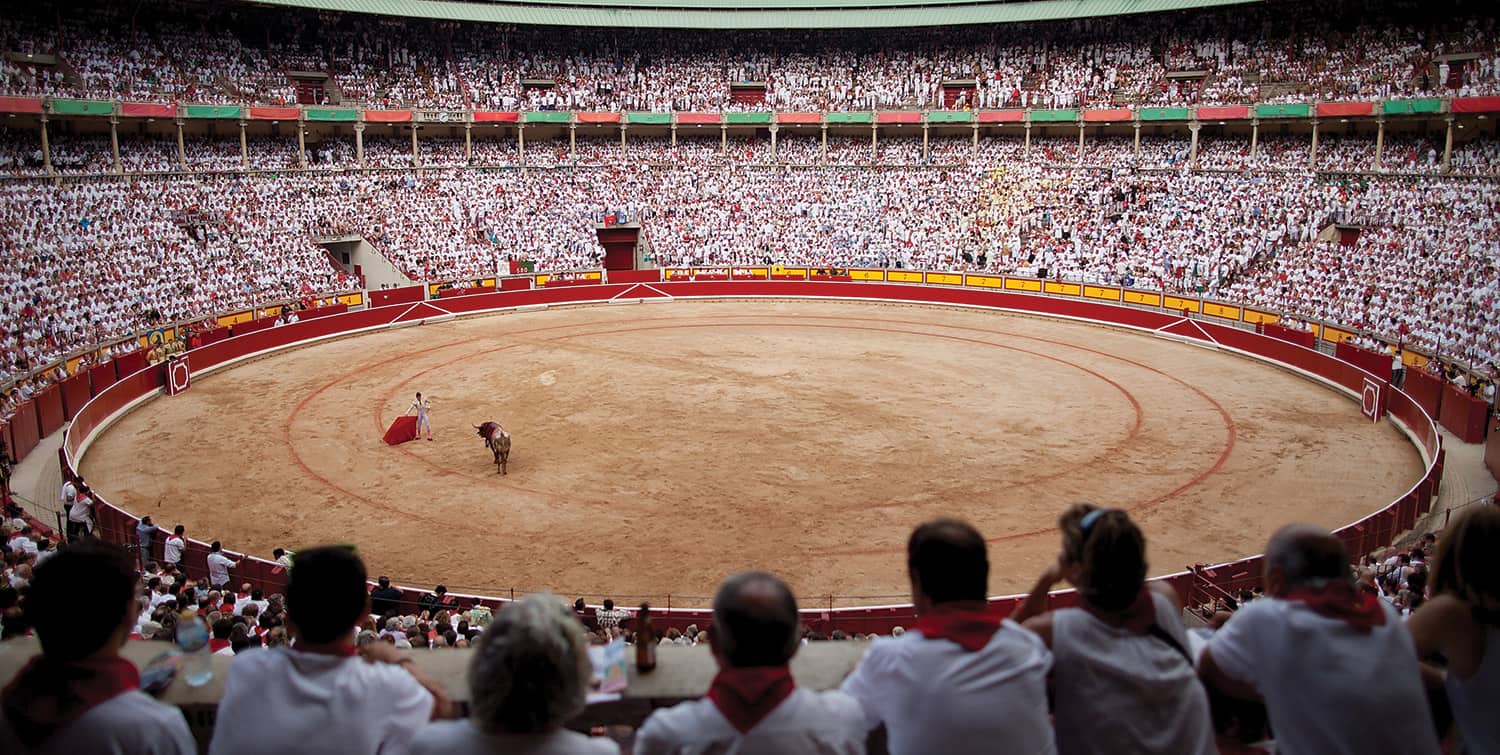
In phase one, the bull is released into the ring with the matador initially observing rather than engaging. The matador has a short time to try to understand the nature and movement of the bull, as the bandilleros run in and out of cover distracting the animal and provoking it to charge. After a while, the two horse-mounted picadores are trumpeted into the arena, each armed with a lance. The bull generally attacks one of the horses, trying to gore its underbelly. As the horse stoically takes the blow the picador uses his lance to stab deeply into the neck muscle of the bull, drawing blood for the first time, weakening the animal’s strength and increasing its fury.
In the second stage the bandilleros reappear, and with speed and nimbleness stab the back of the bull with pairs of brightly decorated barbed-sticks. By this point the bull, after countless charges and with blood streaming down his sides, should be close to exhaustion. Only when the bull is tired, frustrated and angry does the matador truly command center stage to dance, taunt, and strut around the bull with as much buttocks-clenched red-flag-waving style and arrogance as he can muster.
Then, at the last, the final stage: de Muerte. The matador calls for a sword, and after further passes with the bull he faces the animal head-on and plunges the blade precisely and deeply into its spinal cord, killing it with one final masterful stroke.
That’s the plan, anyway, and the first fight we watched was indeed a master class of controlled bravery and accurate stabbery. The second one, however, proved more engaging to me. Like many observers of a neutral contest, I tend to side with the underdog—and in bullfighting that means the bull. Although relatively small, this second bull was strong and brave, and he simply wouldn’t weaken. He ran full pelt at the bandilleros, and when attacked by a picadore he managed to get right under the horse, goring and up-ending his equine opponent and spilling its mount. Horse and picadore only managed to escape further injury thanks to quick diversionary work from the bandilleros. Then, when the matador came to dance and to kill the supposedly weakened and exhausted bull, this bloodied tank-beast managed to rip and flip the fellow twice, nearly crushing him before its final death. Yes, the matador ultimately survived—and won the day—but not before he was cut, battered, bruised and probably broke a rib or two. Such was the fire burning through that bull that I felt they should have let him live, which does happen on occasion.
After the bullfighting, with the heat of the afternoon passing and dusk descending, the parades and revelry started ramping up across town. We ate some more, drank some more and stayed to watch the nightly fireworks over the old city ramparts before heading back to the winery, reluctantly leaving the fiesta to party-on until dawn.

If you are going to wake up thirsty, where better to rise than in a winery? And what a winery to wake up in: the Arinzano estate is simply stunning. Vines were first grown here in the 11th century, but the estate was more recently resurrected in the 1990s by the long-established wine-producing Chivite family. They invited renowned architect Rafael Moneo to build the winery, and he accepted on the basis that he was given sole artistic control. The result is a state-of-the-art operation that sits beautifully among the estate’s original 19th century buildings and which looks as much a part of the landscape as the vines and the valley’s trout-filled River Ega. The estate has eight rooms for guests and several tasting and dining spaces. With those, vine-surrounded buildings, an on-site organic vegetable garden that serves the excellent kitchen and the splendor of the sun-drenched surroundings, Arinzano has no shortage of beauty and harmony. The estate encourages visitors and with its own chapel, complete with papal letter, you can even host a wedding here.
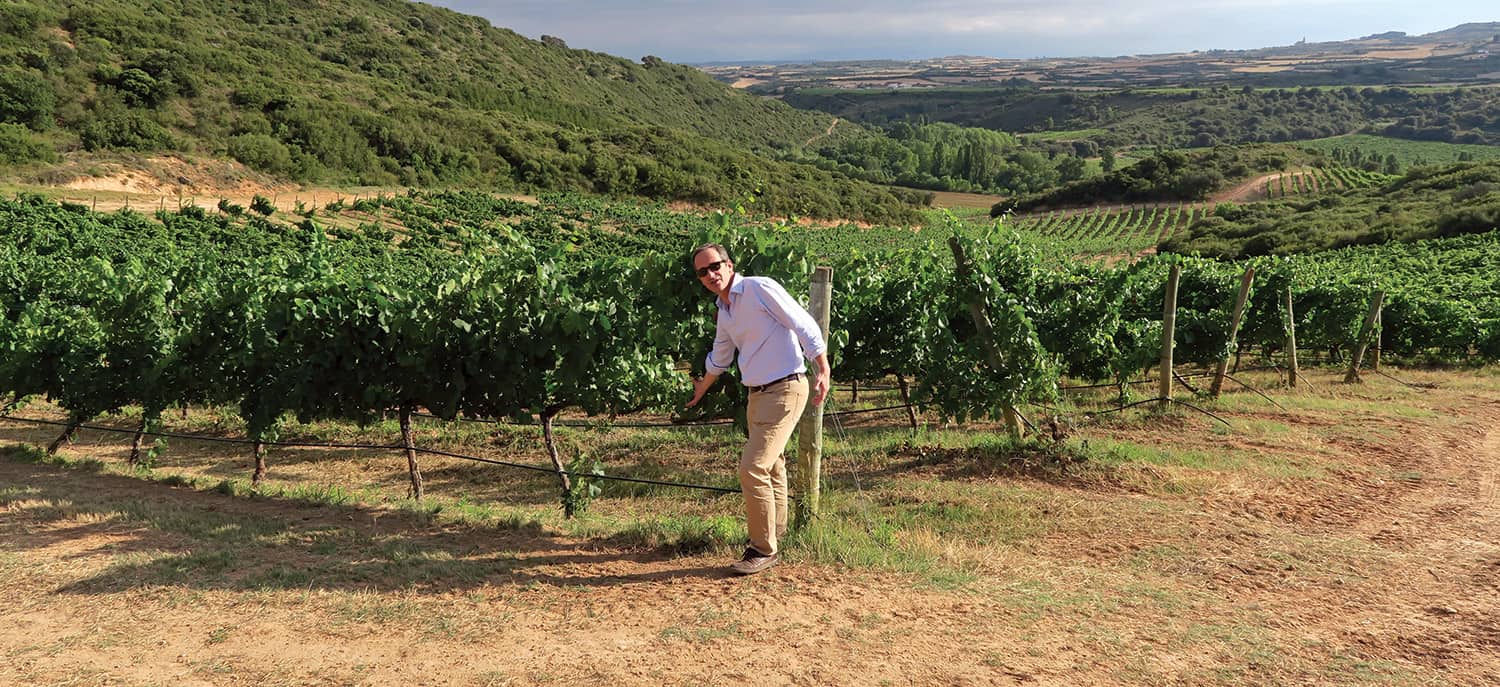
It also has no shortage of potential, despite Navarra not being known for wines in the same way that Rioja, Priorat and Ribera del Duero are, for example. Navarra is more the epicurean center of the country, but with Louzada now taking over at Arinzano everything changes—and if he’s excited about the place, then wine drinkers should be positively elated.
Originally from Portugal, Louzada credits his grandfather, owner of Caves Messias vineyards, with introducing him to the wine business at the ripe old age of five. A young Manuel played in the caves, rolling and climbing wine barrels and running among the vines. Later, he went to Madrid and earned a degree in agricultural engineering and a Masters of Winemaking before returning to Portugal to work for the family winery. A position as head of Ports and winemaking at Rozes LDA was followed by a move to Argentina, where he was eventually appointed director of Winemaking of Chandon, Terrazas de los Andes and Cheval des Andes. After a return to Spain and creating excellence at the lauded Numanthia and Termanthia brands, Louzada saw something special in Arinzano and the Navarra region, and it begins with the climate.
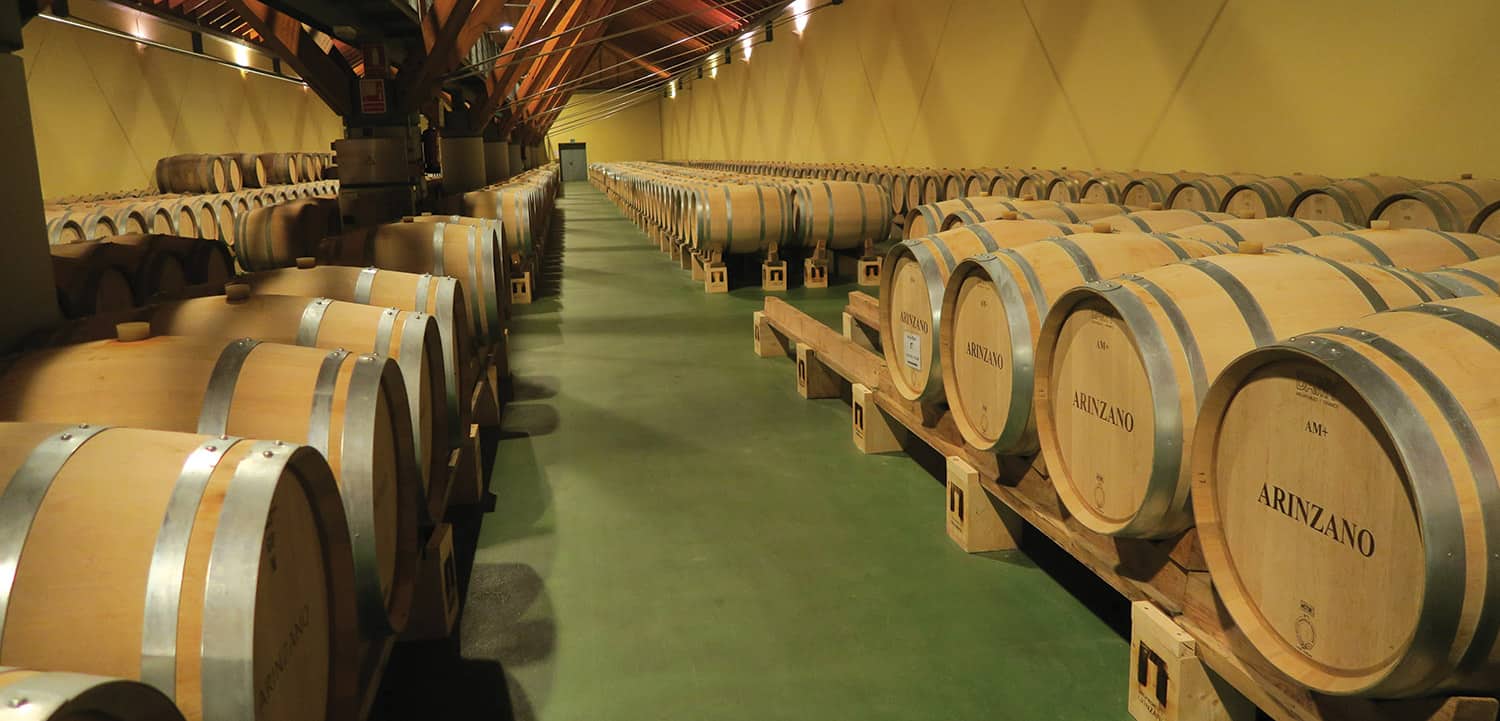
Navarra is separated from the sea by a long mountain range, with constant cooling winds balancing the region’s natural low precipitation and high temperatures. These conditions mean vines are locked into a perpetual struggle for survival, forcing deep roots into vines that yield an intensity of fruit within the grapes. The aforementioned River Ega acts as a climate stabilizer as well, taking the edge off the higher temperatures while also minimizing the risk of frost in colder weather. (This made a huge difference earlier in the year when Bordeaux, Rioja and Tuscany reportedly lost 50 percent of their crops to late frosts in April, while Arinzano escaped unscathed.) Altitude is another factor; the river is at a lower level while the bordering hills, which also catch different sun cycles and wind patterns, rise to 1500 feet above sea level. All of these conditions together on a single estate means that Arinzano can produce a range of grape varietals, including Tempranillo, Cabernet Sauvignon, Merlot and Chardonnay. And if some of that seems ambitious for a Spanish winery (perhaps especially the last), remember that Louzada is the man who created a 100-point wine from an area not formerly known for wine, working with the ancient and rugged Tinto de Toro vines at Termanthia.

Try his Gran Vino Chardonnay and you’d swear you were drinking a top-quality Burgundy—clean, deep, with a sharpness and beautiful clarity of expression. Likewise with the Merlot, Arinzano produces the superb “La Casonna” and there are plans for an organic offering as well, completely estate grown. Three “Hacienda de Arinzano” wines (red, white and rosé) are good values while a Gran Vino Tinto is exceptional, and only made in exceptional years. The Tinto (Tempranillo) is deep in color with a strong black-fruit nose and a persistent mineral finish, and as good as it and the other existing wines are, there are even more exciting bottles on the way, as I learned during a tour of the vineyards and a barrel tasting with Louzada and two young winemakers, Diego Ribbert and Jose Manuel Rodriguez Aguado.
There is a degree of soothsaying to barrel tasting; the impacts to individual wines of barrel quality and properties, storage conditions, and the effects of aging make immense impacts to individual barrels of wine, and of course most wines are blends from various barrels, so along with the science there is a degree of imagination required in barrel tasting. Working through Louzada’s barrels, from his Gran Vino Chardonnay to his Merlot and Gran Vino reds, he discussed ongoing improvements to the vines, the investment in canopy management and various aspects of the barrels he uses. The authority in his words is unquestionable, backed by his tremendous resumé of past success in the bottle. But as he spoke another element became clear as well, driving his inexhaustible creativity and vision, and that is his passion.
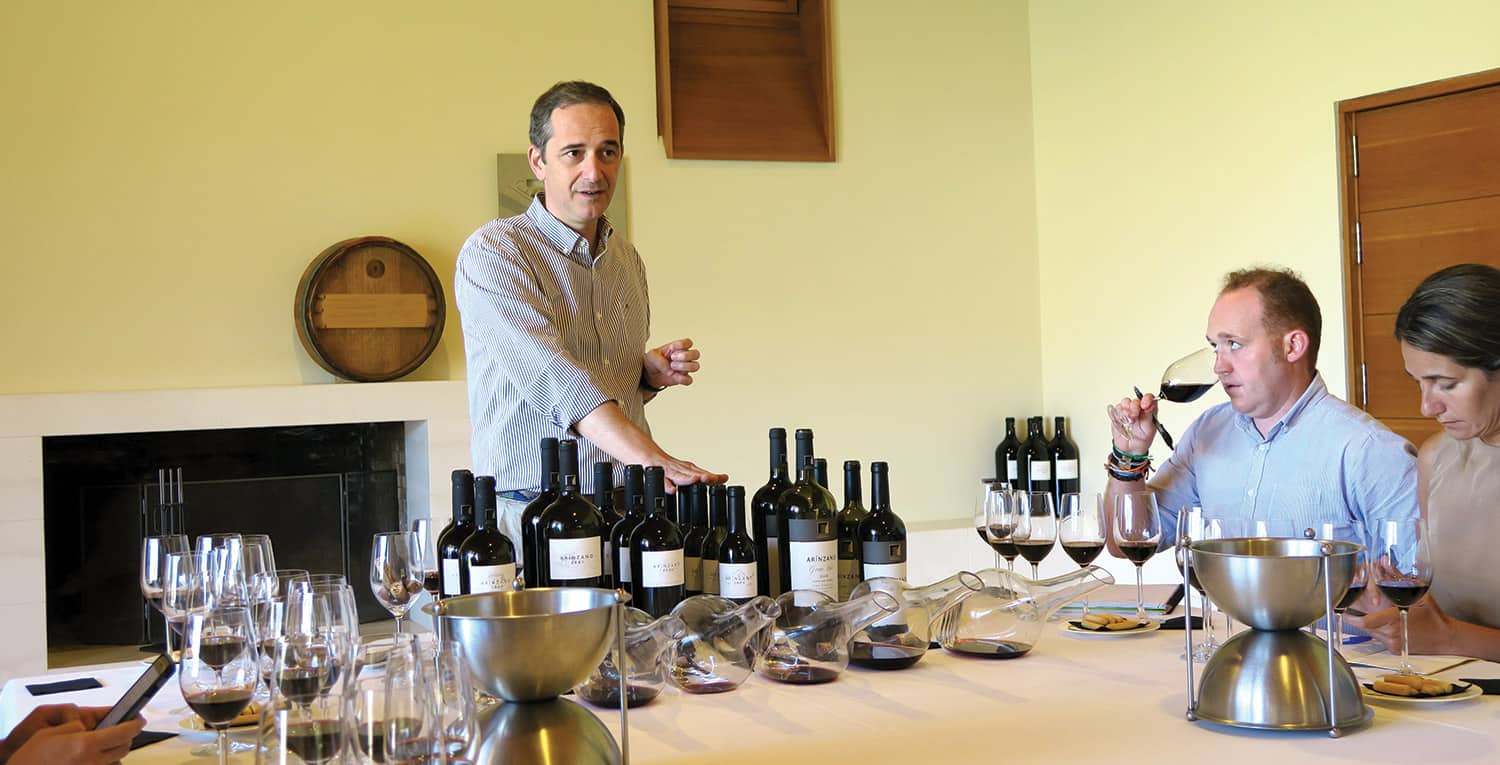
It is this, more than anything else, that is responsible for the harmony here, the seamless integration of the modern winery into the ancient valley, of the valley into the region and of the region into the country. Friends and strangers racing up a narrow street with raging bulls, the roar of a crowd as a man flamboyantly confronts death, wine spilling over a throng under the racket of fireworks and even the rugged vines grown deep in the harsh soil and the expert hands of the man who spends his life tending to them. Passion is everywhere here, wielding a red cape and a sword or sitting quietly in a bottle. If I didn’t know what it meant when I arrived, I surely knew by the time I left: “mas de vino.” More wine, more friends, more everything. Even if you’re not sure what’s been said, if you’re in Spain and your glass is empty, the answer is always “sí.”
To learn more about Arinzano wines or book a stay visit arinzano.com
Follow Us On


| Cookie | Duration | Description |
|---|---|---|
| cookielawinfo-checkbox-analytics | 11 months | This cookie is set by GDPR Cookie Consent plugin. The cookie is used to store the user consent for the cookies in the category "Analytics". |
| cookielawinfo-checkbox-functional | 11 months | The cookie is set by GDPR cookie consent to record the user consent for the cookies in the category "Functional". |
| cookielawinfo-checkbox-necessary | 11 months | This cookie is set by GDPR Cookie Consent plugin. The cookies is used to store the user consent for the cookies in the category "Necessary". |
| cookielawinfo-checkbox-others | 11 months | This cookie is set by GDPR Cookie Consent plugin. The cookie is used to store the user consent for the cookies in the category "Other. |
| cookielawinfo-checkbox-performance | 11 months | This cookie is set by GDPR Cookie Consent plugin. The cookie is used to store the user consent for the cookies in the category "Performance". |
| viewed_cookie_policy | 11 months | The cookie is set by the GDPR Cookie Consent plugin and is used to store whether or not user has consented to the use of cookies. It does not store any personal data. |